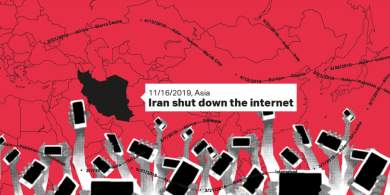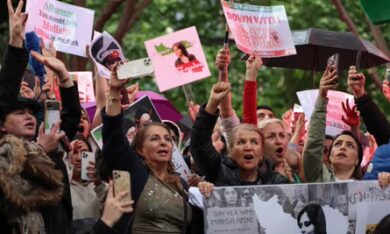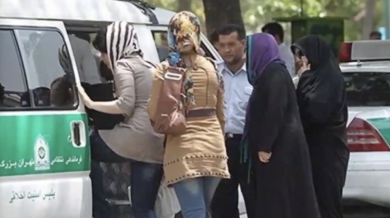The Iranian diaspora plays a crucial role in supporting women’s resistance inside Iran, amplifying their voices, advocating for international action, and providing resources to sustain their fight for freedom and equality. The “Women, Life, Freedom” movement, ignited by the death of Mahsa Amini, has mobilized Iranians worldwide, proving that resistance extends far beyond Iran’s borders.
Iranian women inside the country face arrests, torture, and violence at the hands of the Islamic Revolutionary Guard Corps (IRGC) and the regime’s security forces. Meanwhile, those in exile—journalists, activists, artists, and human rights defenders—use their freedom abroad to shed light on Iran’s struggle and ensure the world does not forget.
This article explores:
• How the Iranian diaspora amplifies the voices of women inside Iran.
• The role of advocacy, media, and digital activism.
• How diaspora-led sanctions and legal efforts pressure the regime.
• Ways the global community can support Iranian women through the diaspora.
1. The Iranian Diaspora: A Powerful Force for Change
A. Who Are the Iranian Diaspora?
The Iranian diaspora consists of millions of Iranians who left their homeland due to political oppression, war, economic hardship, and human rights violations. Key groups include:
• Political exiles who fled after the 1979 Islamic Revolution.
• Journalists and activists who escaped censorship and imprisonment.
• Artists and academics who use their platforms to tell Iran’s story.
• Second-generation Iranian immigrants who carry forward their parents’ fight for justice.
Despite living in different countries, the Iranian diaspora remains deeply connected to the struggle inside Iran, especially in supporting women’s resistance.
2. How the Diaspora Amplifies Women’s Voices in Iran
A. Digital Activism and Media Advocacy
• Social media campaigns: Iranian activists abroad create hashtags, viral videos, and online petitions to keep global attention on Iranian women’s resistance.
• Exiled journalists: Figures like Masih Alinejad use platforms like Twitter, Instagram, and Telegram to bypass state censorship and share real-time updates.
• Satellite TV and independent media: Diaspora-led media outlets like Iran International and Radio Farda broadcast uncensored news to Iranians, countering the IRGC’s propaganda machine.
These efforts ensure Iranian women’s struggles are seen worldwide, making it harder for the regime to suppress dissent in silence.
B. Organizing Protests and Rallies Worldwide
• The Iranian diaspora has led mass protests in major cities like Los Angeles, London, Berlin, Paris, and Toronto, echoing the demands of women inside Iran.
• These demonstrations put pressure on foreign governments to take stronger actions against the Iranian regime.
• Collaboration with feminist movements worldwide helps highlight the Iranian women’s cause as part of the global fight for gender equality.
Through protests, the diaspora makes it clear: Iranian women do not stand alone.
3. Advocacy for Sanctions and Diplomatic Pressure
A. Calling for International Recognition of the Women’s Movement
Diaspora-led groups have successfully:
• Pushed for UN resolutions condemning Iran’s treatment of women.
• Advocated for the expulsion of Iran from the UN Commission on Women’s Rights.
• Encouraged governments to formally recognize the “Women, Life, Freedom” movement as a legitimate fight for human rights.
B. Sanctions Against the IRGC and Human Rights Violators
• Iranian activists abroad have lobbied for targeted sanctions against IRGC officials, morality police, and judges involved in repressing women.
• The U.S., Canada, and EU have imposed sanctions, but more coordinated action is needed.
• The diaspora demands that the IRGC be designated a terrorist organization to limit its financial networks and ability to suppress dissent.
Economic pressure makes it harder for the regime to fund oppression, and the Iranian diaspora is leading this effort.
4. The Role of Iranian Women in Exile
A. Exiled Journalists and Activists Fighting for Freedom
Women like Masih Alinejad, Nazanin Boniadi, and Shirin Ebadi have:
• Exposed human rights violations through investigative journalism.
• Advocated for imprisoned activists like Narges Mohammadi and Sepideh Gholian.
• Faced threats and assassination attempts by the Iranian regime for speaking the truth.
Their voices keep Iranian women’s struggles in global conversations, ensuring continued support and pressure.
B. Artists and Writers Keeping the Resistance Alive
Iranian artists in exile use film, music, literature, and visual art to highlight women’s struggles. Examples include:
• Filmmakers like Jafar Panahi and Marjane Satrapi, whose films reveal the brutality of Iran’s regime.
• Iranian musicians composing protest songs that inspire demonstrators.
• Writers and poets who capture the pain and resilience of Iranian women in their works.
Cultural activism ensures that Iranian women’s fight is never forgotten.
5. Supporting Women in Iran: What the Diaspora Can Do Next
A. Provide Financial Support for Resistance Efforts
• Crowdfunding to support families of political prisoners and women activists in need.
• Funding underground networks that provide legal aid and safe houses for persecuted women.
• Donating to organizations that help Iranian refugees seeking asylum.
Financial assistance can strengthen women’s resistance inside Iran.
B. Strengthen Digital Security and Bypass Censorship
• The IRGC heavily monitors online activity, blocking websites and surveilling activists.
• The diaspora can provide:
✔ VPN services to Iranians to bypass censorship.
✔ Encrypted communication apps to protect activists.
✔ Cybersecurity training to prevent hacking by regime forces.
Access to uncensored information is critical for Iran’s women-led resistance.
C. Lobby Governments for Stronger Action
• Advocate for the expulsion of Iranian diplomats involved in human rights abuses.
• Pressure governments to stop negotiating with the IRGC-led regime until women’s rights are respected.
• Demand international legal actions against Iranian officials responsible for crimes against women.
Legal and diplomatic efforts can make it harder for the regime to continue its abuses without consequences.
6. The Global Responsibility to Support Iranian Women
A. Women’s Struggle in Iran is a Global Feminist Issue
• The oppression of Iranian women is not just Iran’s problem—it’s a women’s rights issue worldwide.
• Feminist movements in the West must actively support Iranian women by including their struggle in global campaigns.
• Just as the world supported South African women against apartheid, it must support Iranian women against gender apartheid.
Global feminism must include Iranian women.
B. The Role of International Media
• Western media must continue covering Iranian women’s protests, not just during peak moments but consistently.
• Documentaries, interviews, and news features must highlight Iran’s women-led revolution.
• Platforms like The Guardian, BBC, and CNN must prioritize Iranian women’s voices in discussions on human rights.
Visibility ensures that Iran’s movement does not fade from public consciousness.
Conclusion: A Movement That Cannot Be Silenced
Iranian women inside and outside the country are leading a historic fight for freedom, but they cannot do it alone. The Iranian diaspora plays a crucial role in amplifying voices, securing international support, and applying global pressure to hold the regime accountable.
From organizing protests to advocating for sanctions, exposing human rights abuses, and financially supporting activists, the diaspora is an indispensable force in the fight for Iranian women’s freedom.
Join Our Newsletter!
Stay informed with the latest updates, news, and ways to take action in the fight for justice and global security. Sign up now to get updates delivered straight to your inbox!





